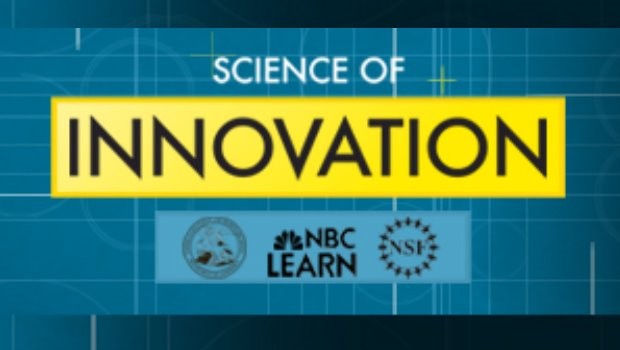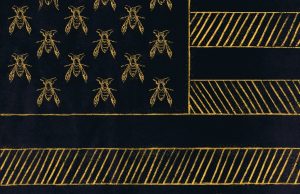NBC: Science of Innovation

From 3-D bioprinting that could one day generate heart tissue to origami-inspired structures built for medicine and space exploration, a new set of educational videos, released today, continues an exploration begun three years ago inside the creative process that leads to innovation. Six new stories in the “Science of Innovation” video series highlight how innovation can turn fundamental science and engineering ideas into significant societal and economic impacts.
NBC Learn, the educational arm of the NBCUniversal News Group, produced the first set of videos in 2013, in partnership with the National Science Foundation (NSF) and the U.S. Patent and Trademark Office (USPTO).
USPTO Director Michelle K. Lee debuted the latest “Science of Innovation” videos to educators and students at a Science, Technology, Engineering and Mathematics (STEM) event today in Bettendorf, Iowa, with Senator Chuck Grassley and Iowa Lt. Governor Kim Reynolds. Multiple stories from the new “Science of Innovation” collection will be shown to help promote STEM education.
“Across the country our schools are full of bright students with creative imaginations and soaring optimism. These ‘Science of Innovation’ videos demonstrate that when you mix a big idea with an entrepreneurial spirit, there is no limit to what can be achieved,” said Lee. “By continuing to engage with students and encourage them to pursue an education in science, technology, engineering and mathematics, we give them the tools to turn their dreams into realities and lay the foundation of future innovation.”
These new videos continue NBC Learn’s and NSF’s Emmy award-winning “Science of…” partnership that has produced 12 other educational video series.
“NSF’s investments in basic research have led to surprising and powerful innovations, and contribute to many technologies that are part of our daily lives,” said Pramod Khargonekar, NSF assistant director for engineering. “Understanding how engineering and science research leads to beneficial impacts on our lives, as these videos with NBC Learn and USTPO show, is key to creating a better world where people and technology can realize their full potential.”
Narrated by NBC News and MSNBC anchor Kate Snow, the six videos will be available through NBC affiliate stations, and can also be seen for free online at NBCLearn.com, NSF.gov, Science360.gov, and USPTO.gov.
Each video aligns to state and national education standards. Lesson plans and activities also will be available soon to help teachers engage students in the classroom and teach key concepts about innovation and STEM.
“We’re pleased to partner with the National Science Foundation and the U.S. Patent and Trademark Office to launch the next phase in NBC Learn’s ‘Science of Innovation’ series,” said Soraya Gage, vice president and general manager of NBC Learn. “These videos can inspire students to become inventors of the future whose ideas shape our society.”
NBC Learn will host a Twitter chat where viewers can learn more and join the discussion by using the hashtag #ScienceofInnovation on Wednesday, March 2, at 1 p.m. ET. The chat will feature some of the innovators profiled in the videos, as well as experts from NSF and USPTO.
The new “Science of Innovation” videos feature the inventions of six trailblazing scientists and engineers from around the country, including:
“3D Bioprinting” – Adam Feinberg at Carnegie Mellon University has come up with a technique that expands the use of 3-D printing technology and could one day allow researchers to print heart tissue.
“Origami Structures” – Origami is the ancient Japanese art of paper folding. But to engineer Mary Frecker of Pennsylvania State University, it is the future for designing tools that could be used in fields such as medicine and space exploration.
“Friction-Stir Welding” – Welding has long been used to join pieces of metal together. At the University of North Texas, Rajiv Mishra is using a form of welding in a new technology that can improve metal’s strength, toughness, and other properties and could bring new opportunities to the automotive and aircraft industries.
“Motion Controller for Virtual Reality” – William Provancher of Tactical Haptics has developed a device that combines the sense of touch with technology. Called the “reactive grip,” it allows the user to experience the virtual world in a whole new way.
“Micro-Fabrication for Cochlear Implants” – Angelique Johnson is the CEO of MEMStim, a company that is innovating how electrode arrays in cochlear implants are manufactured. Using automated micro-fabrication, instead of costly hand-made manufacturing, Johnson is able to lower the cost of production, allowing more people in need of implants to afford them.
“Using Viruses to Make Batteries” – While most people see viruses as harmful, Angela Belcher at MIT sees the future of energy. Belcher uses viruses engineered in her laboratory to form nano-scale wires for tiny batteries that could eventually be used to produce a wide range of electronics at a lower cost.














